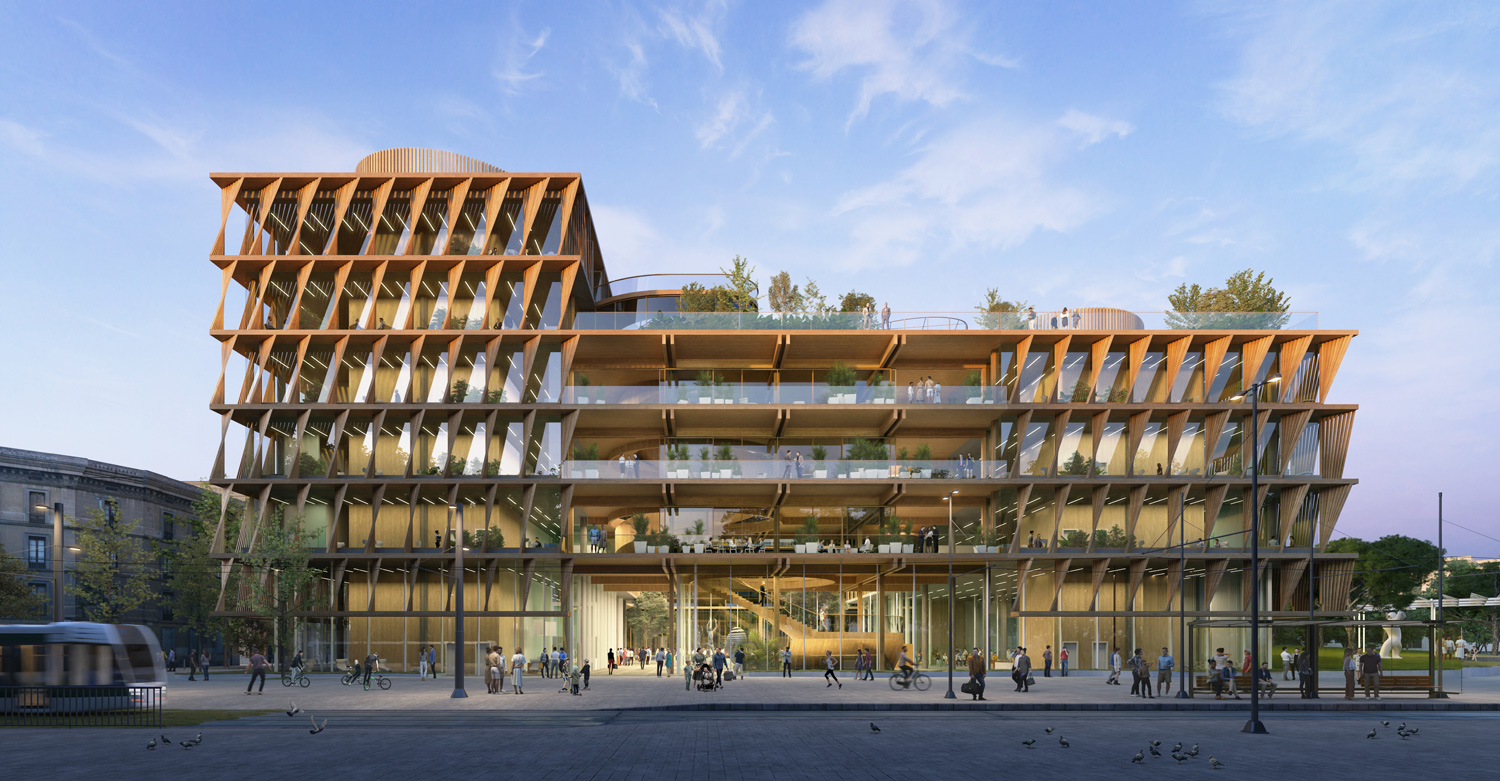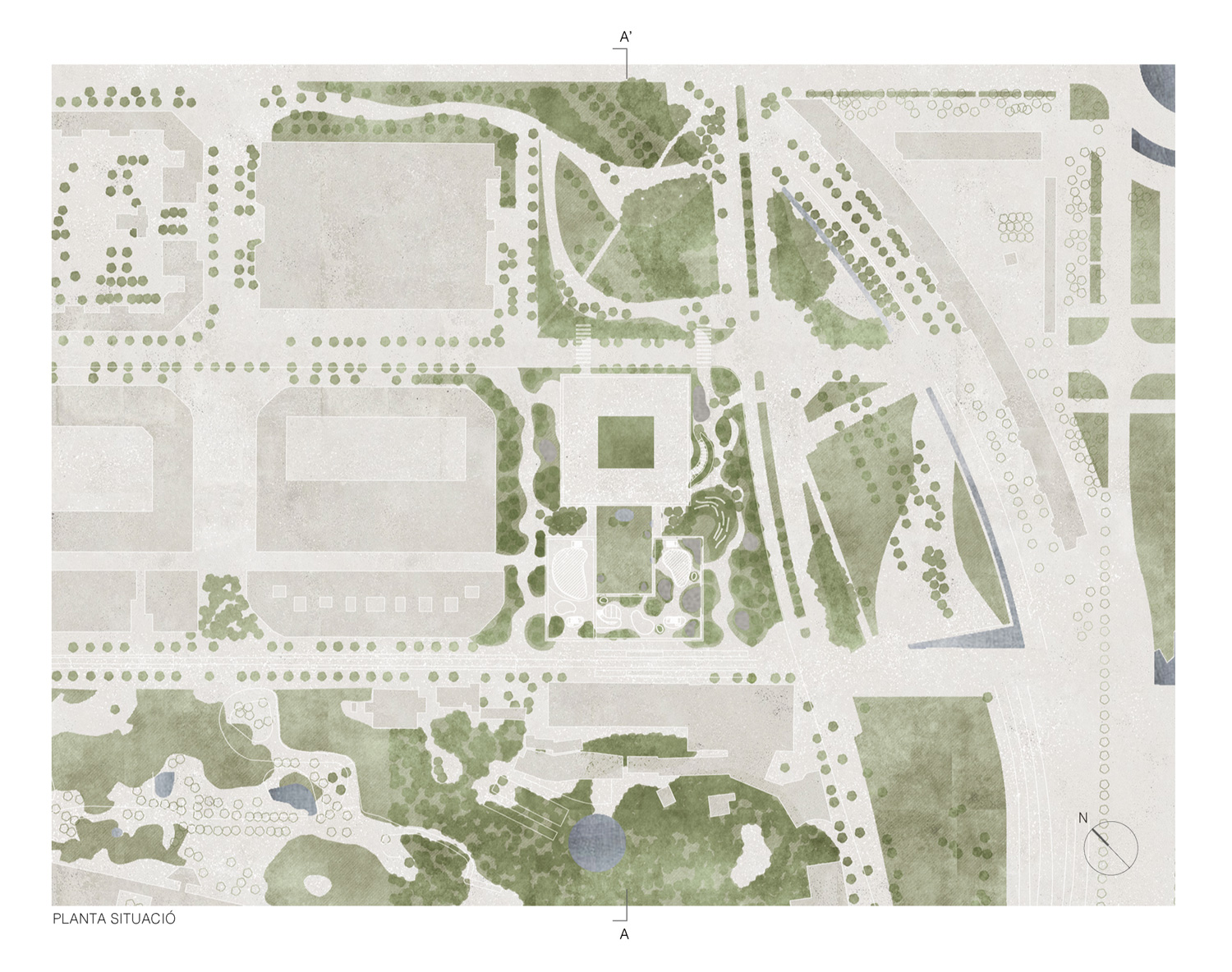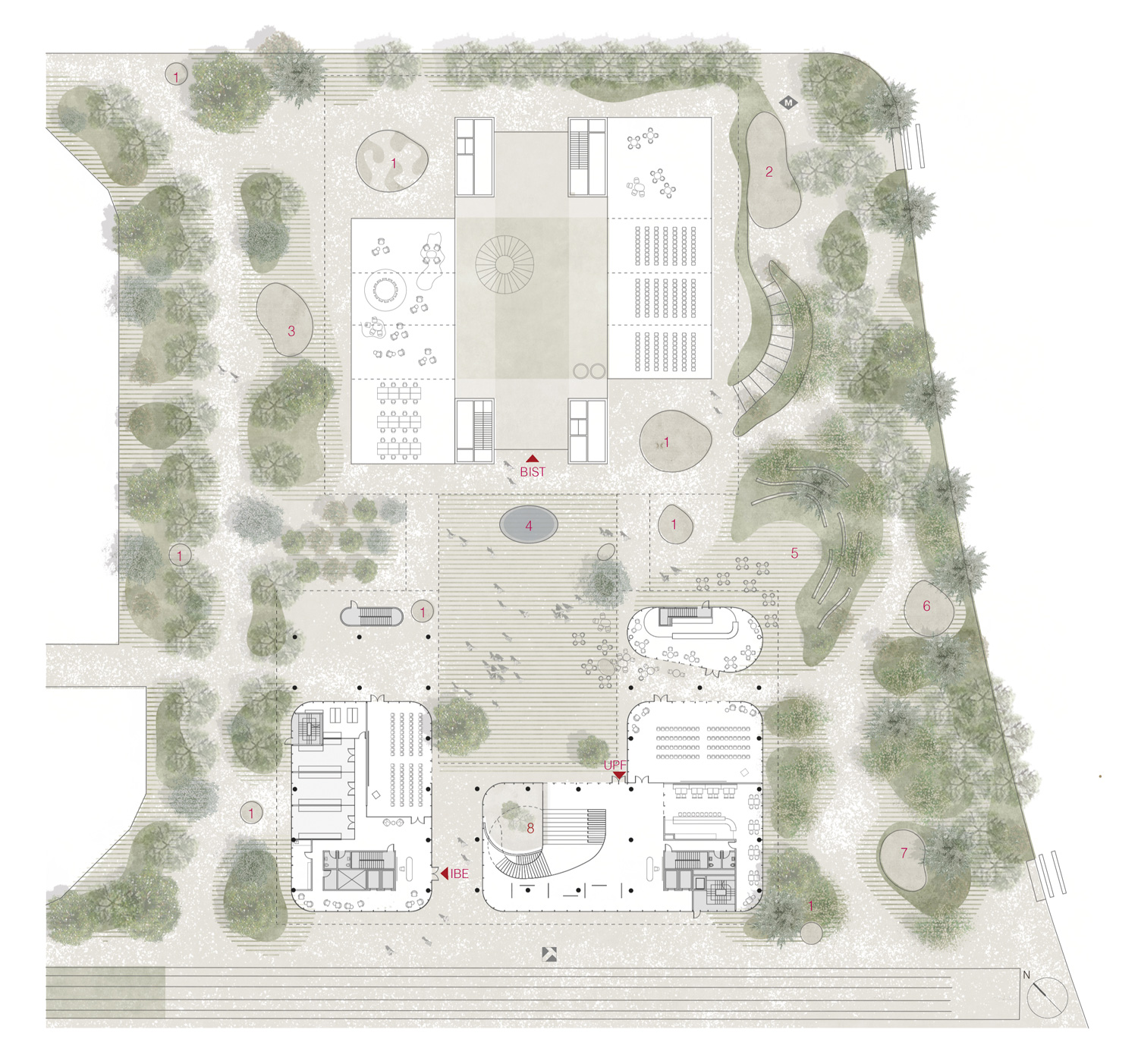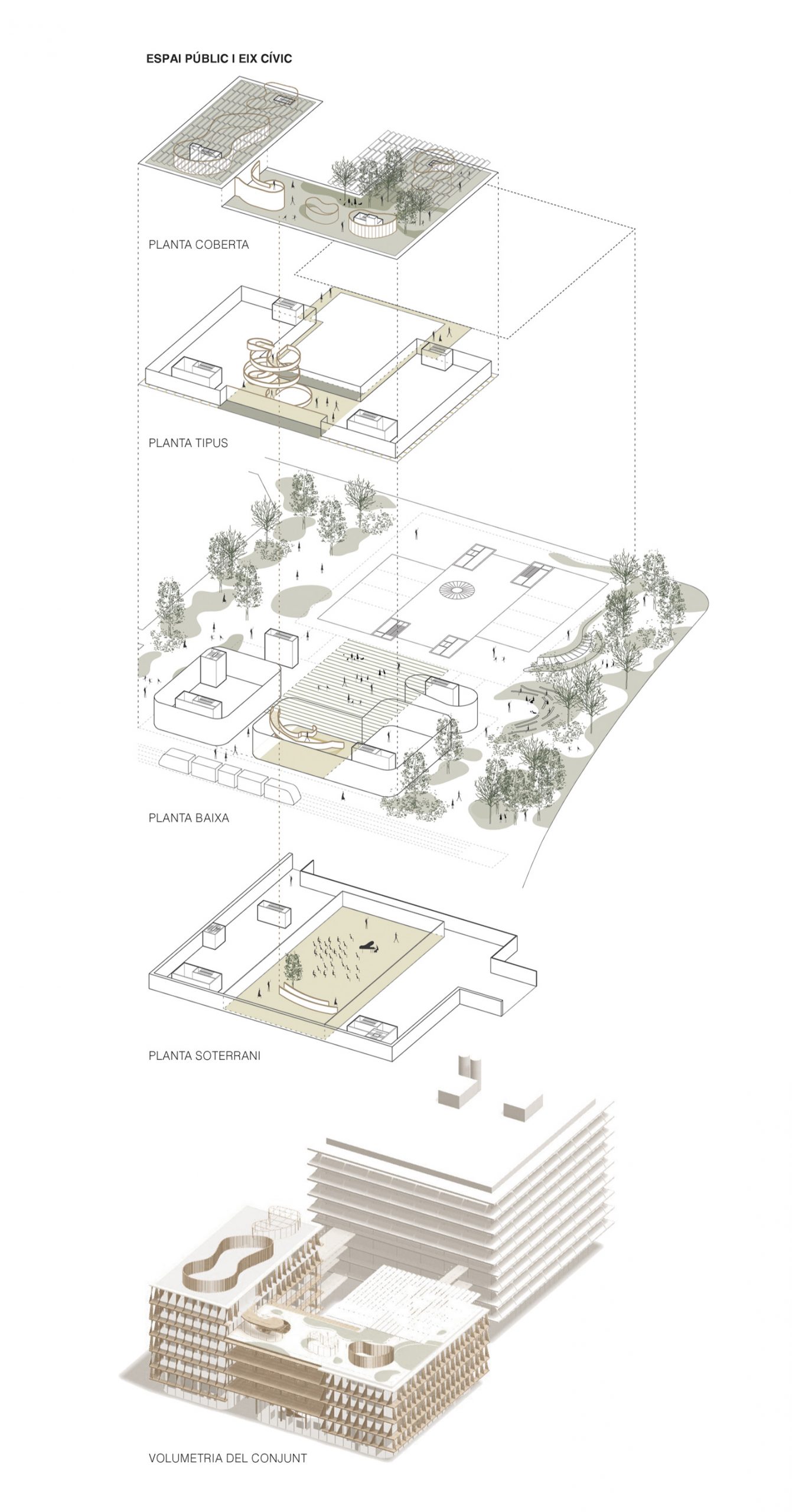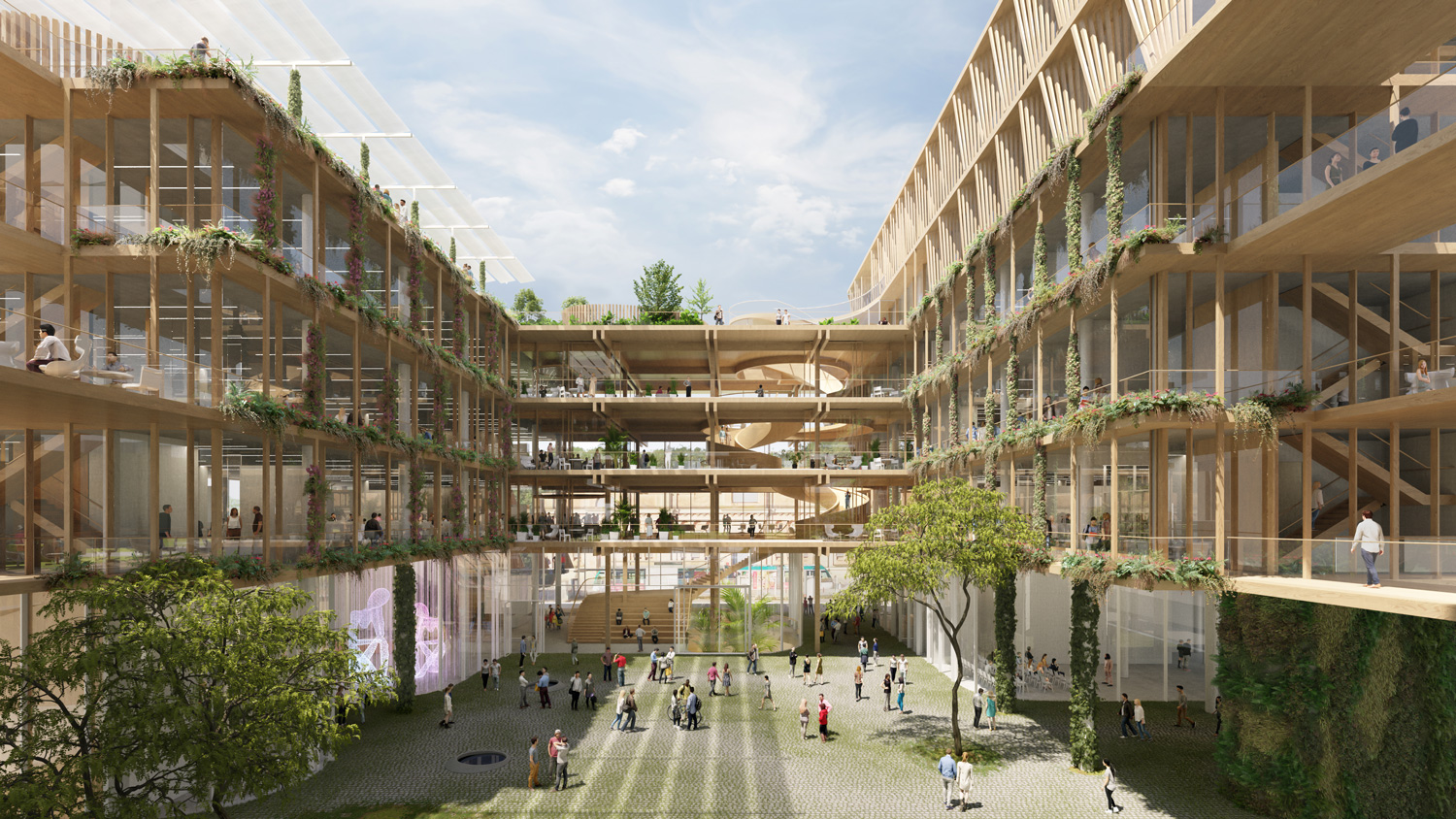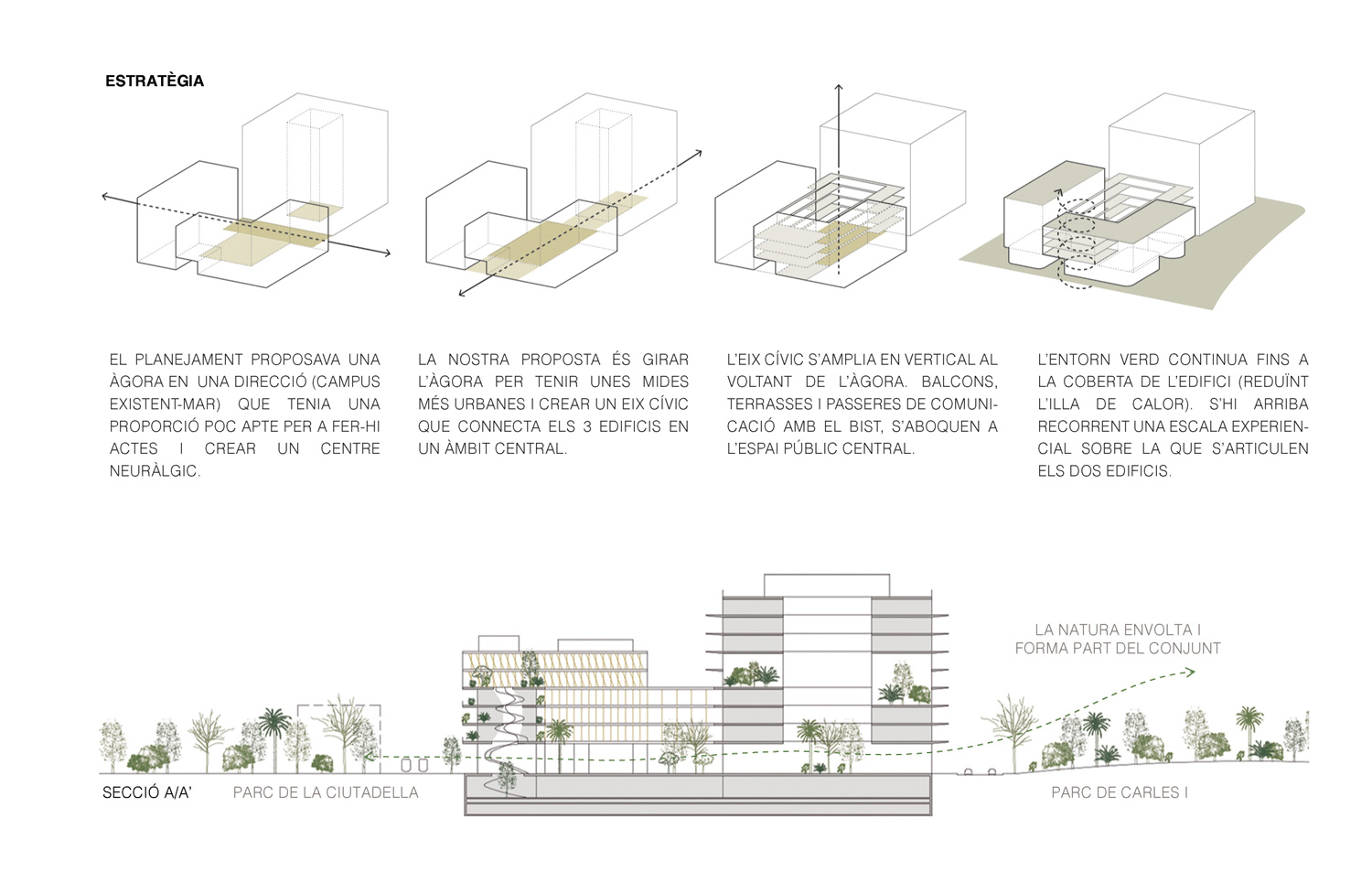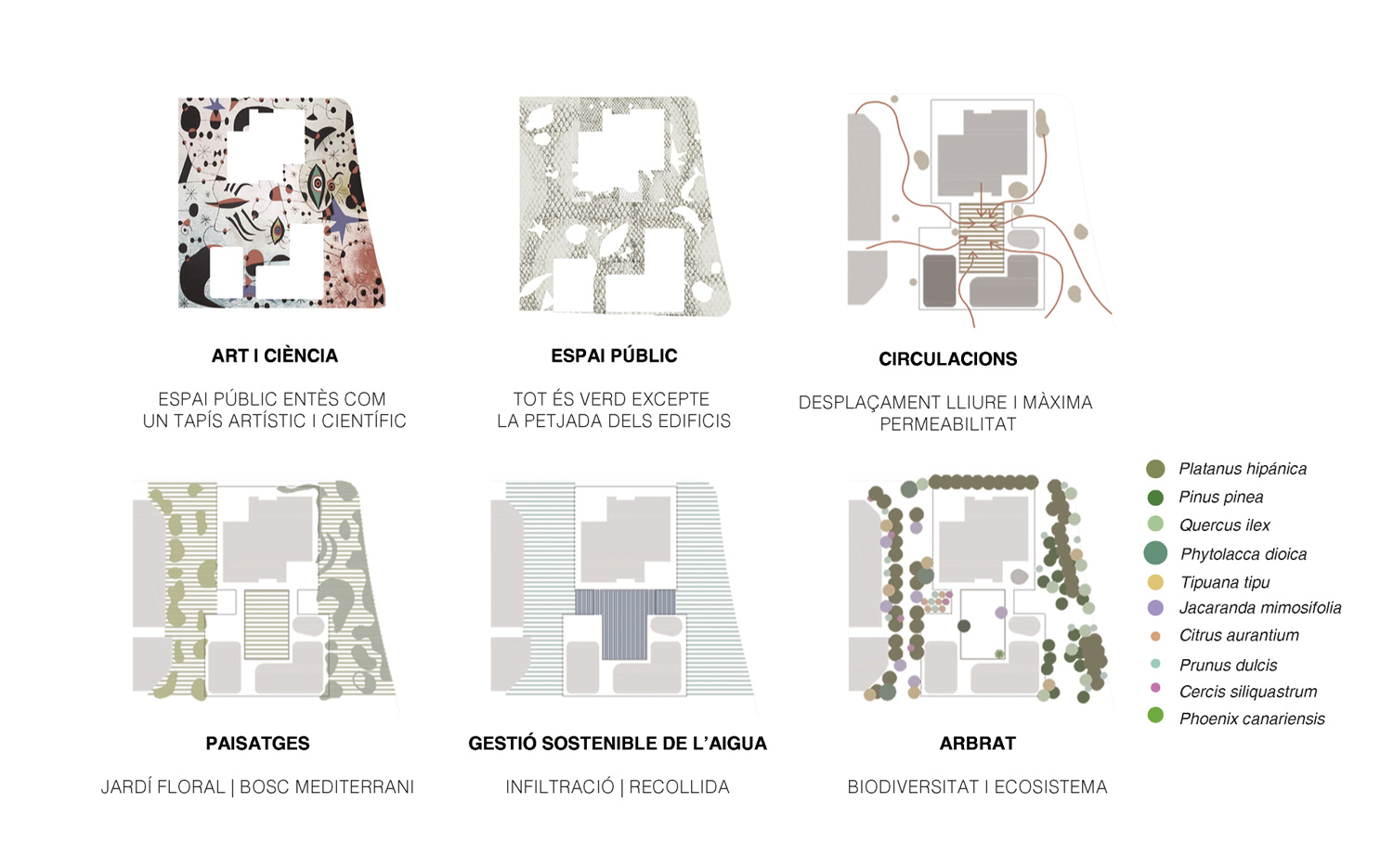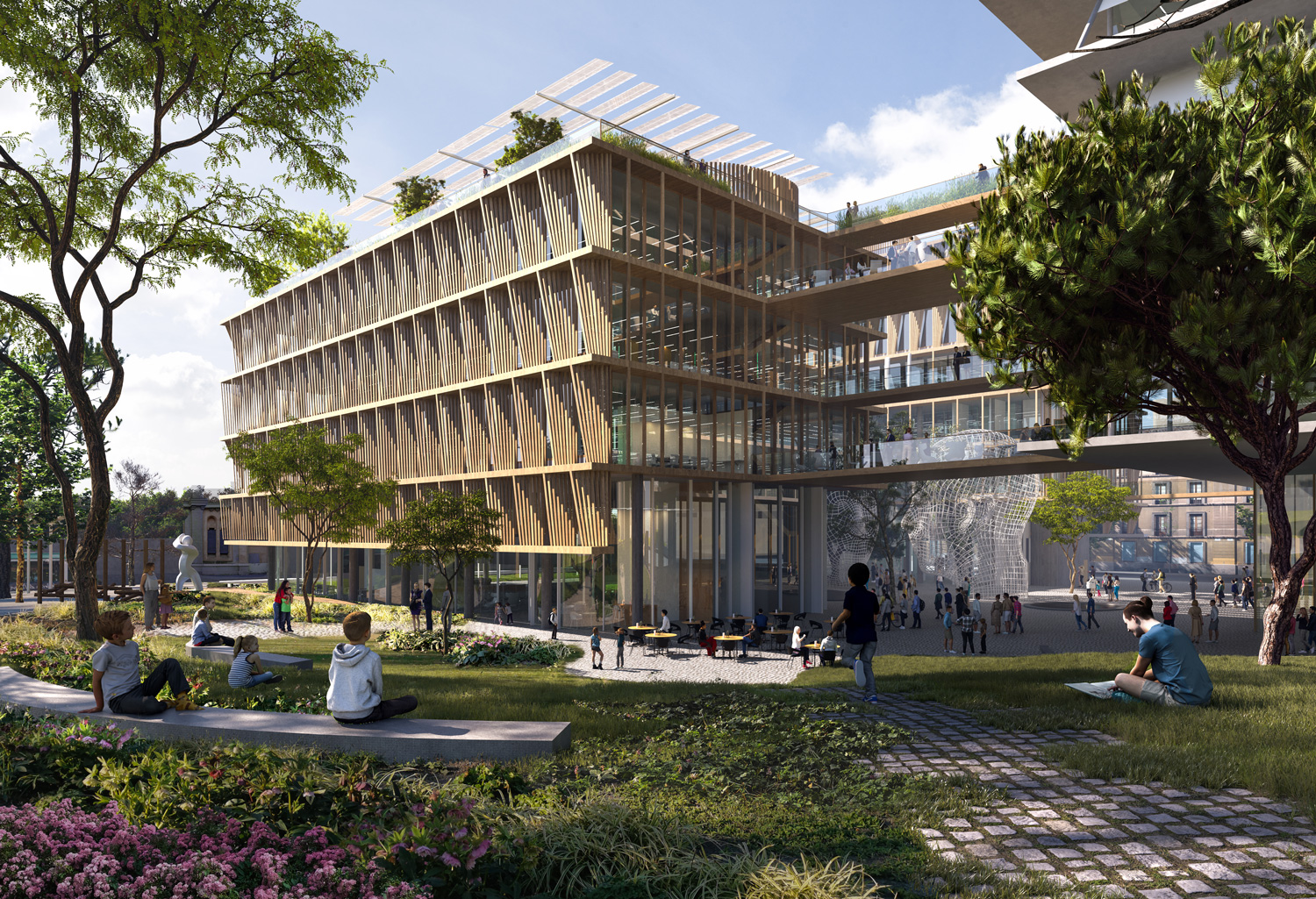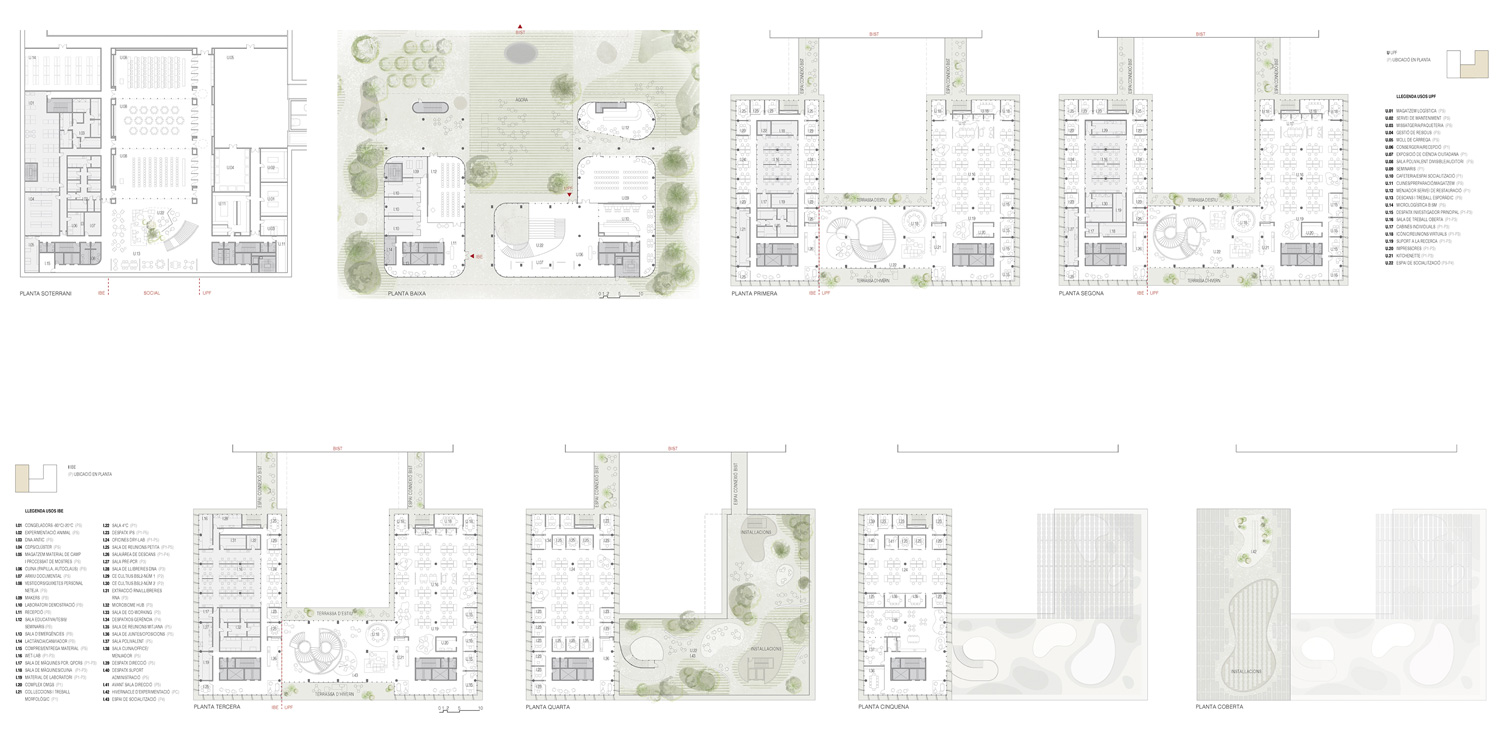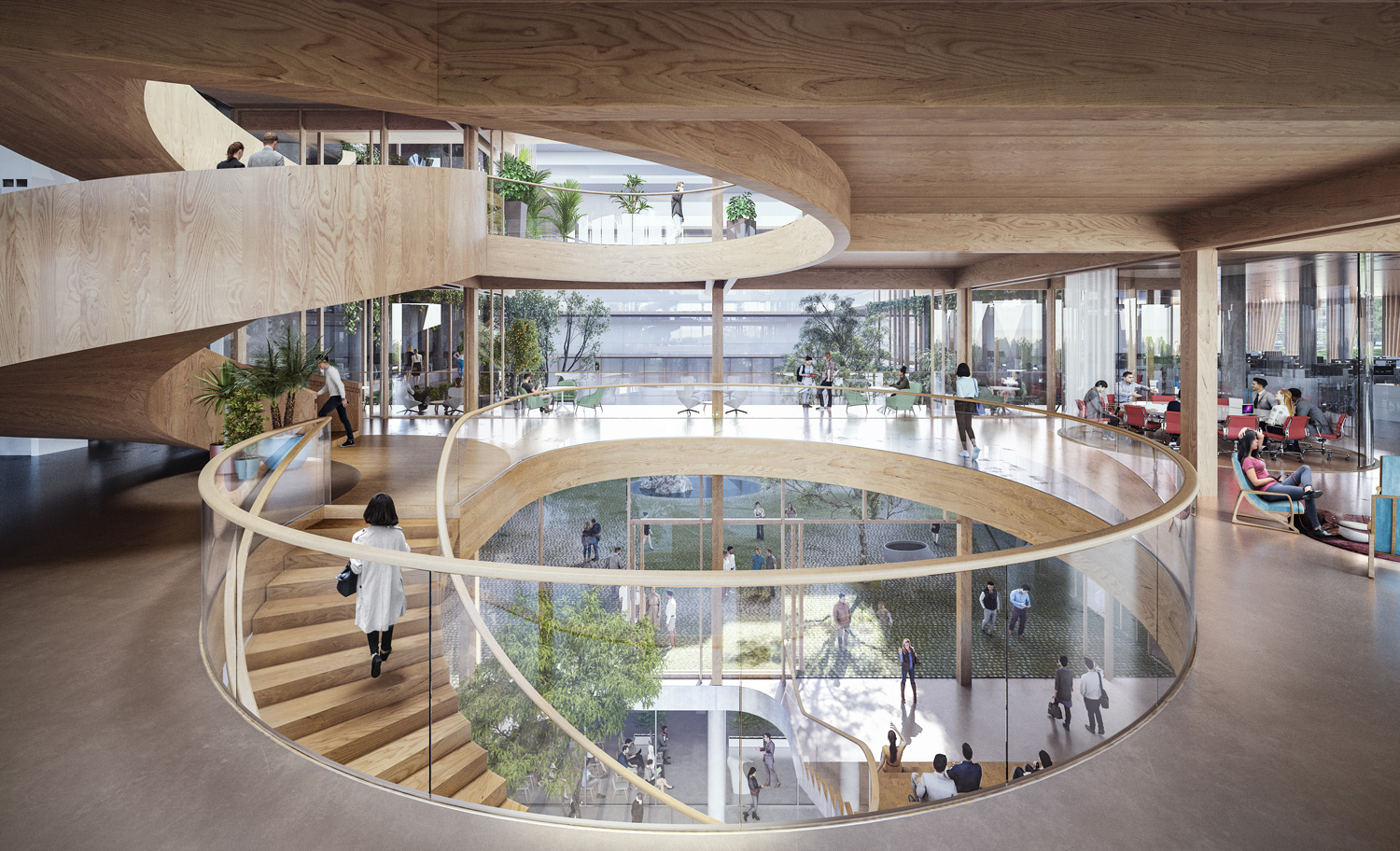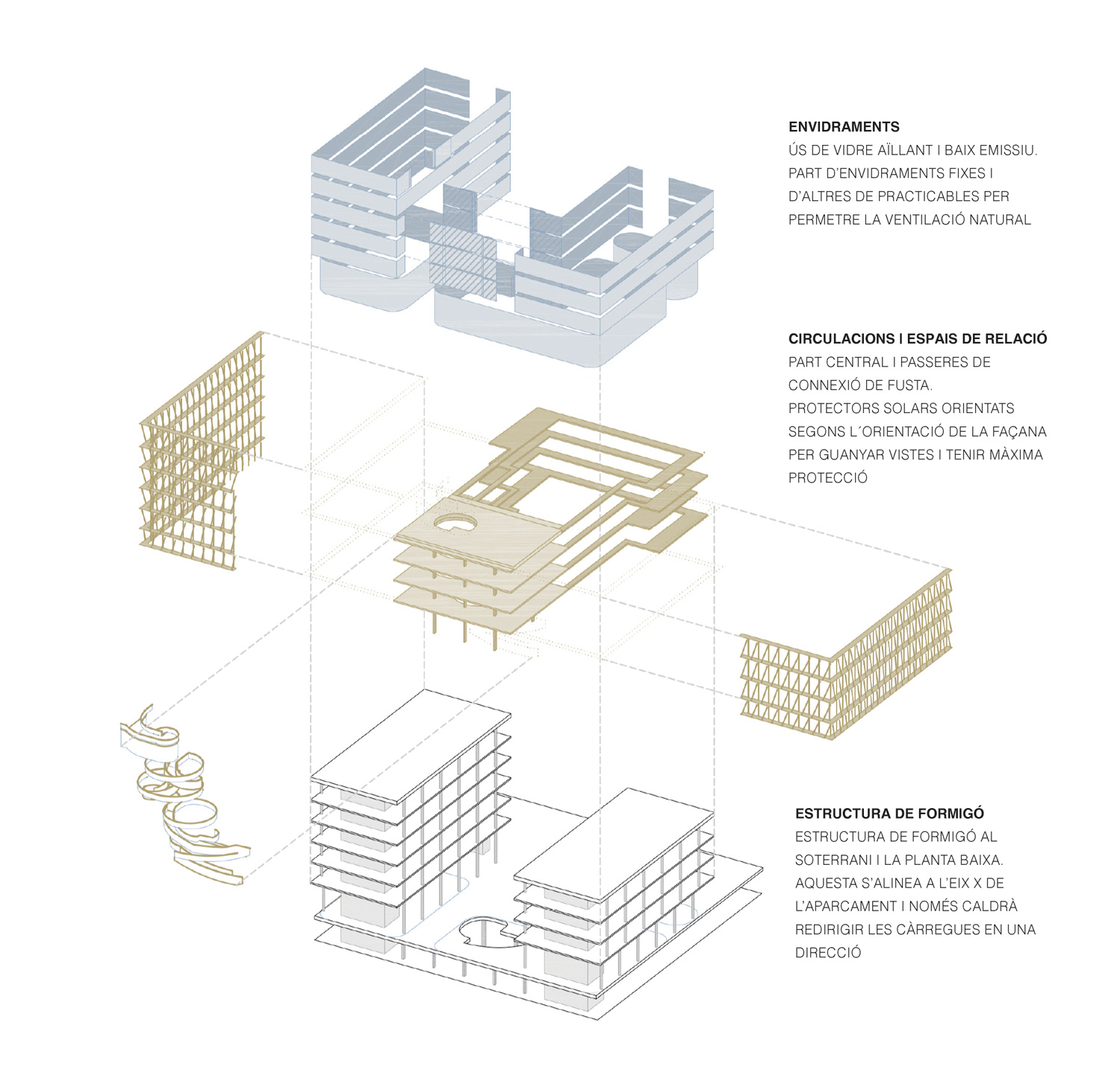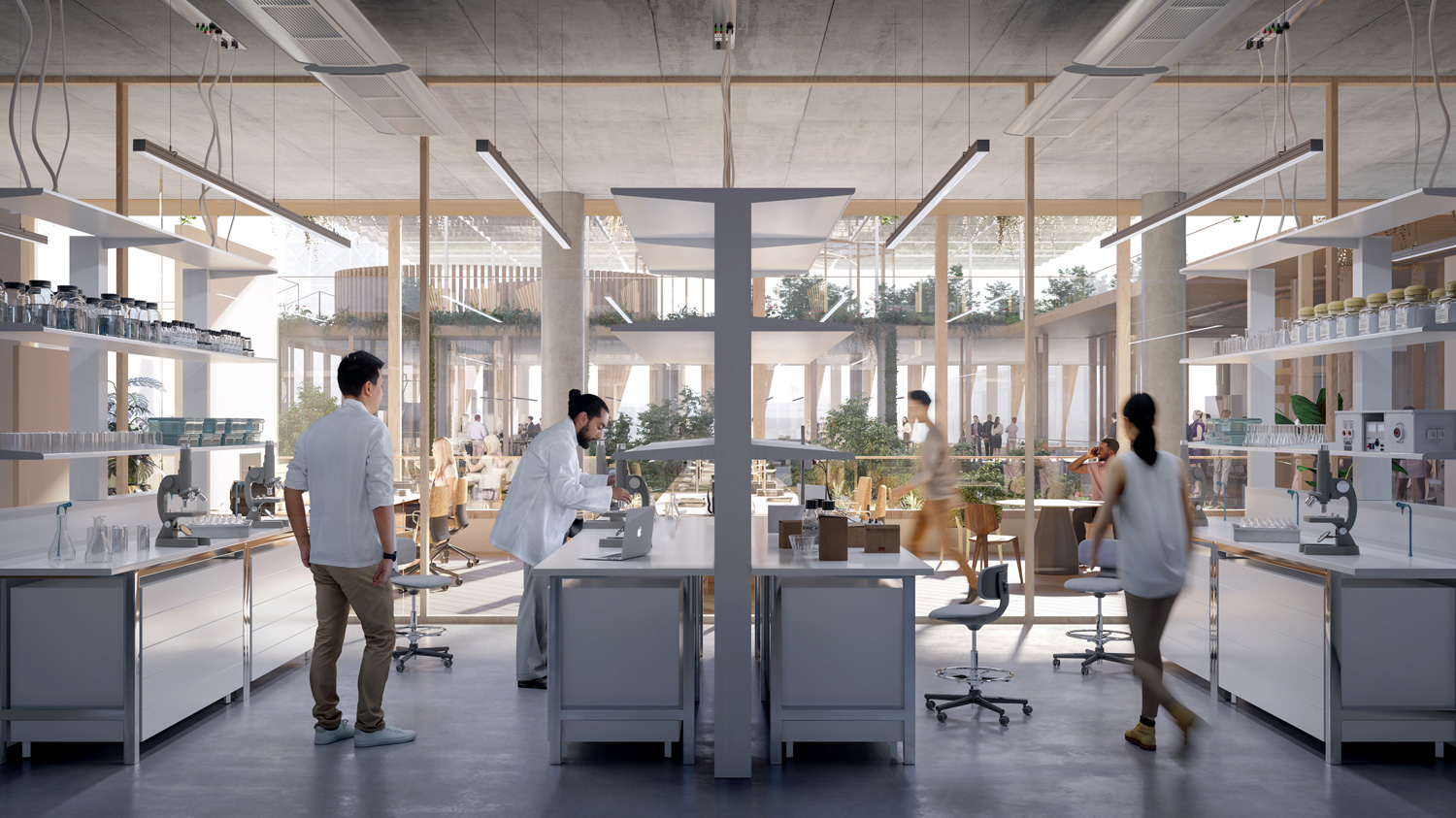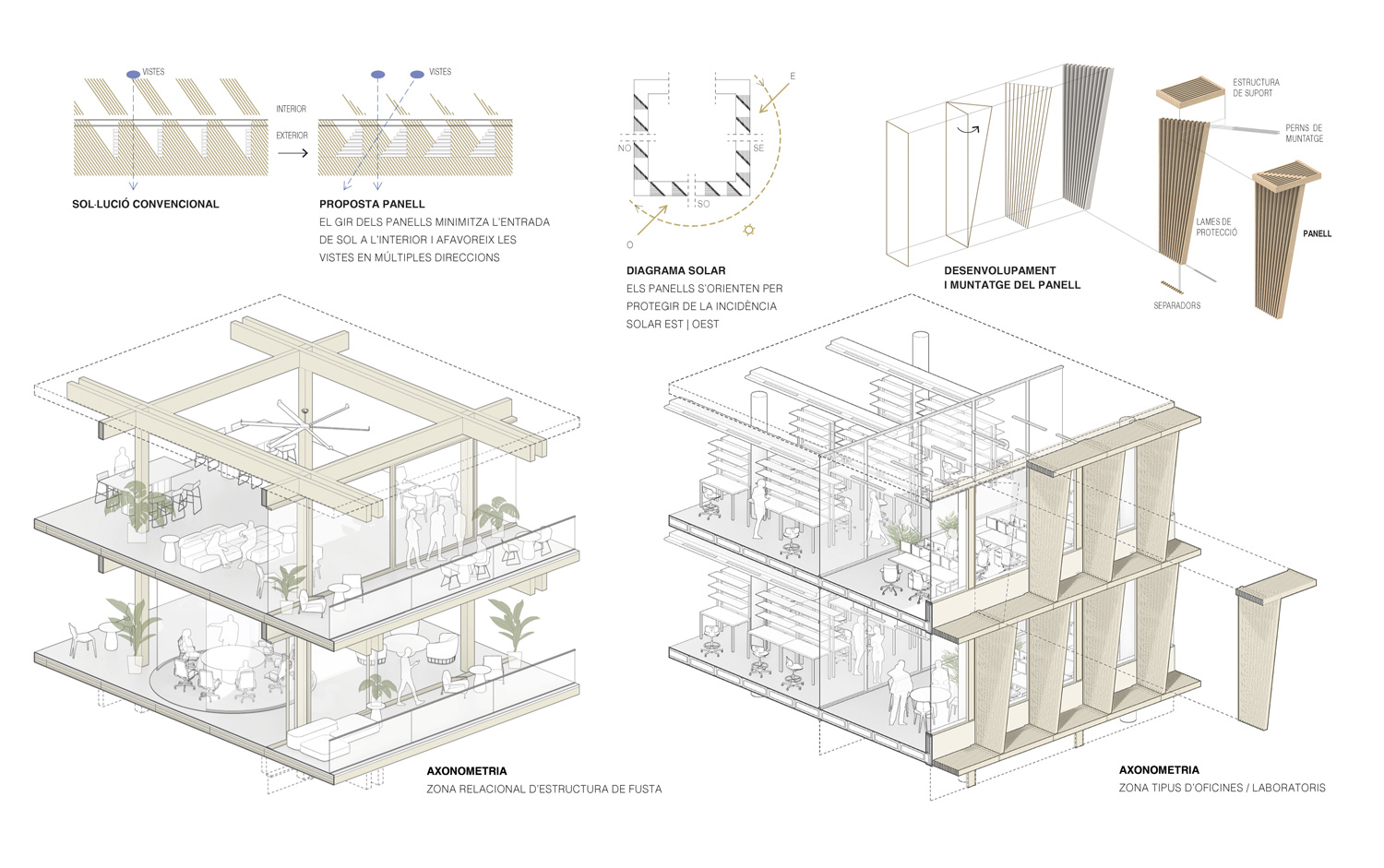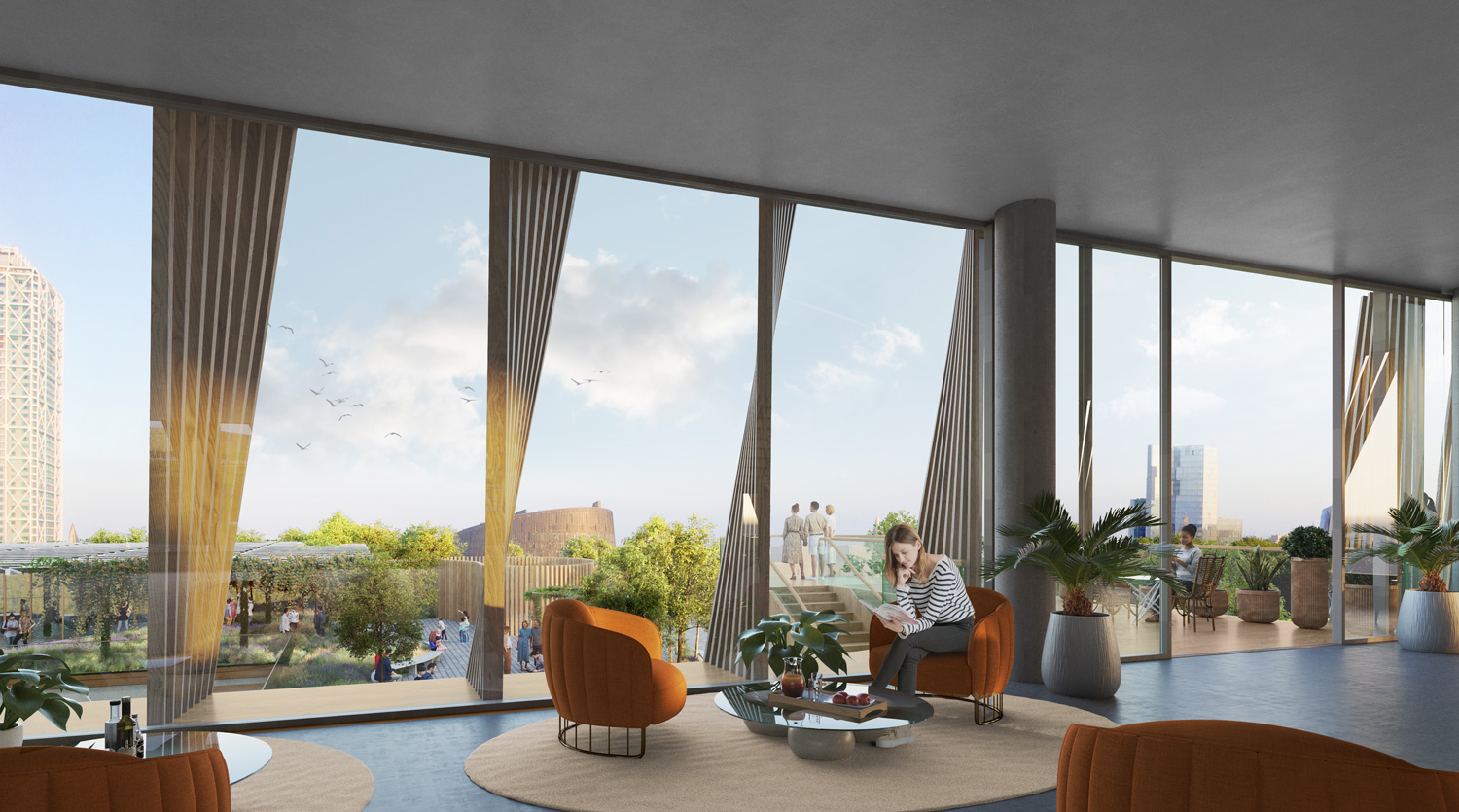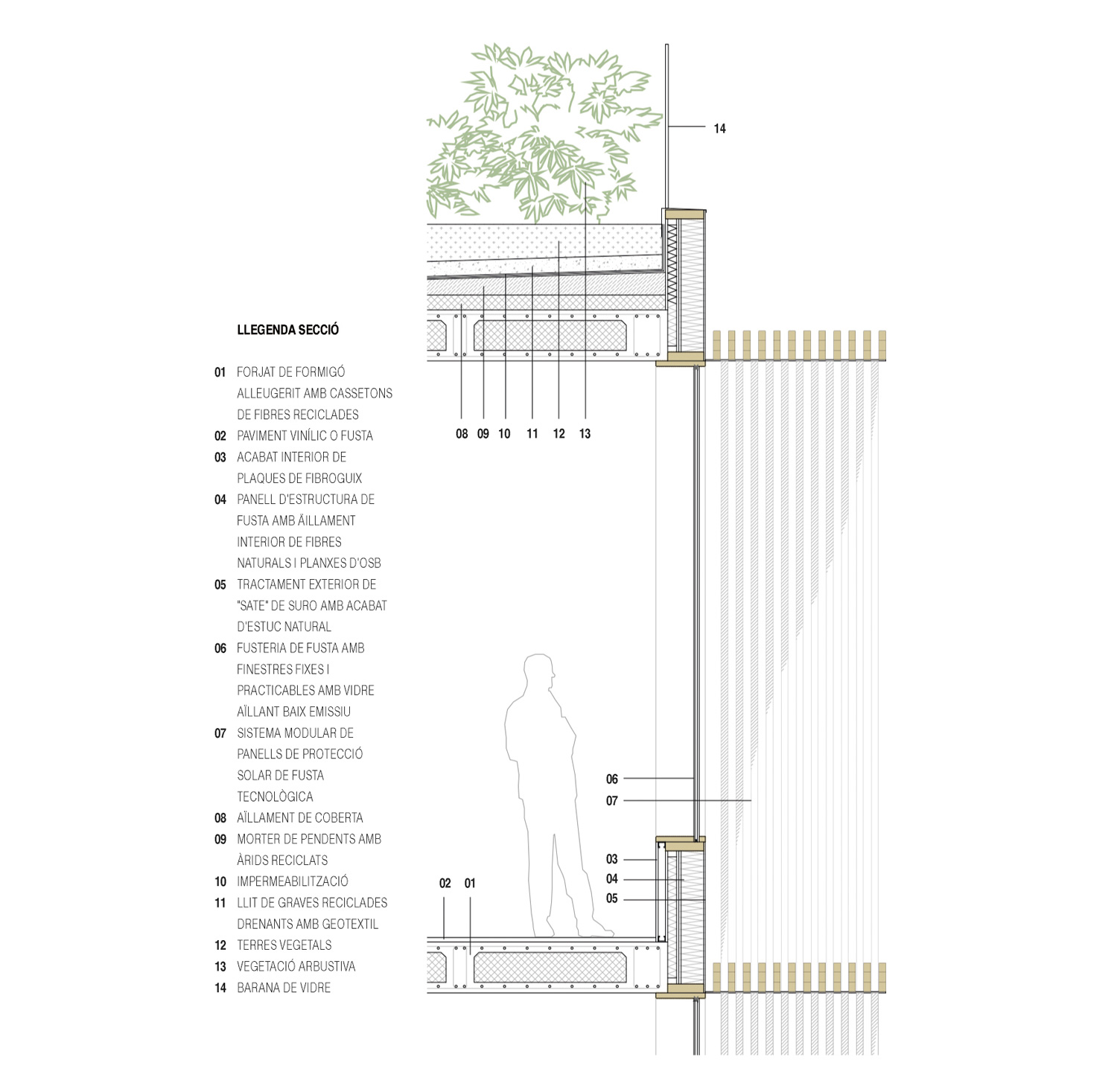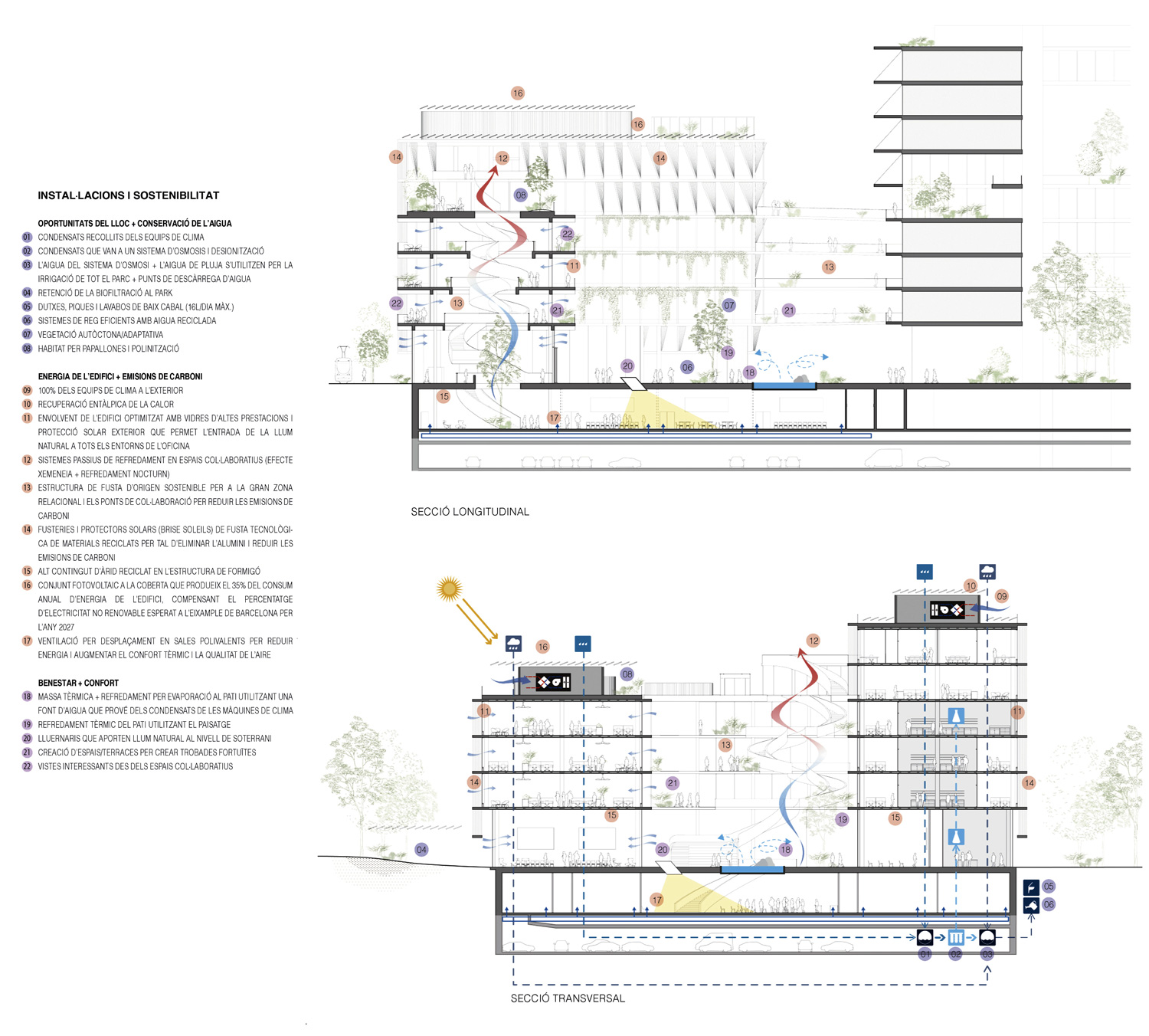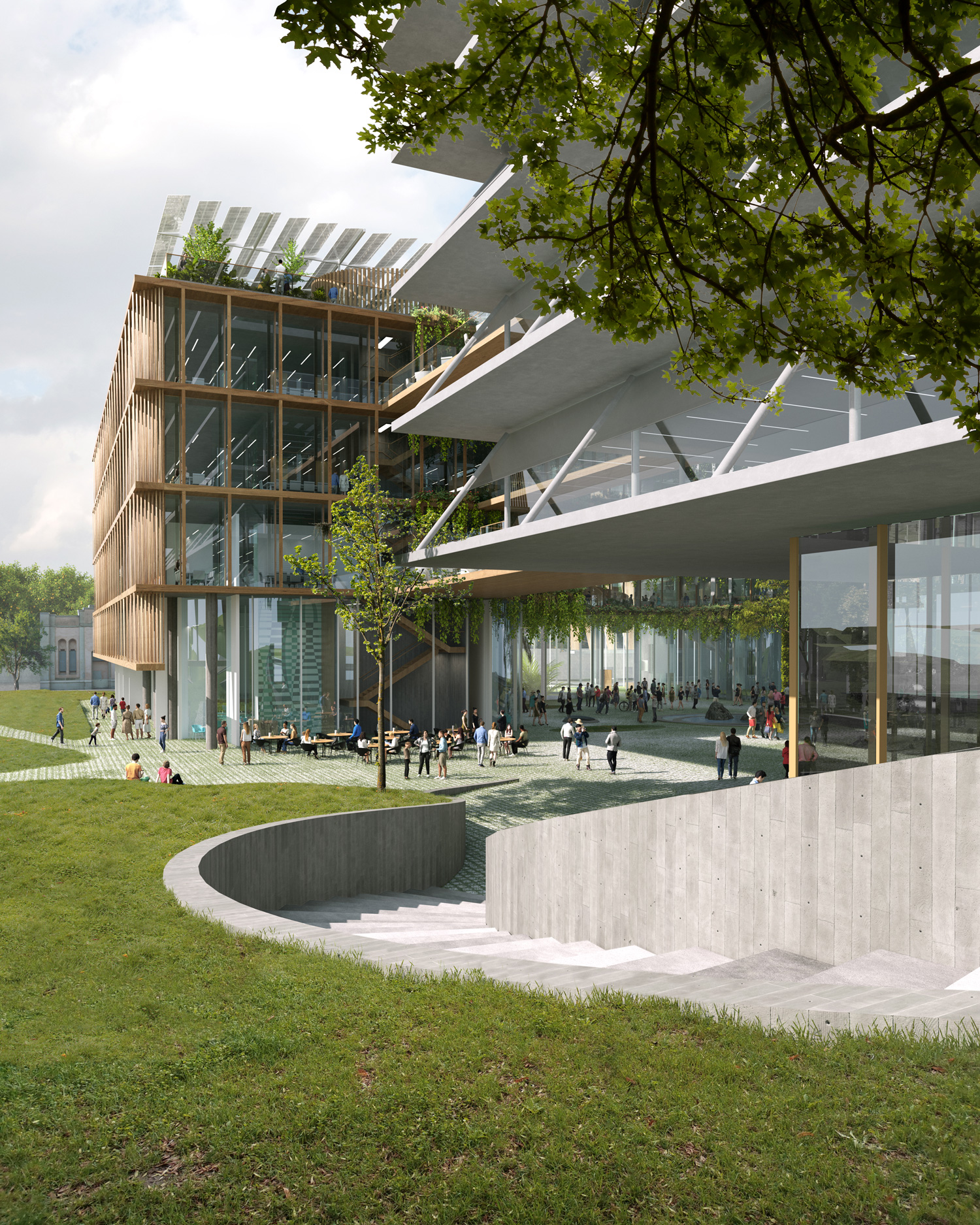3099-MIG-BCN.ES-2022
Client: Universitat Pompeu Fabra UPF
Status: Competition (2022) Project (2022) On going
Location: Barcelona, Spain
Coordinates: 41.3878320, 2.1921930
Climate: Temperate, Mediterranean
Materials: Glass, Concrete, Wood
Environment: Urban
Visualizer: Studio
Budget: 20.000.000 €
Scale: 18.000 ㎡ Large
Ratio: 1.111,11 €/㎡
Types: Education, Research center
This new laboratory in Barcelona will unite global experts in the experimental sciences, social sciences, and humanities to address the world’s most complex and vexing challenges related to the future of our planet, including biodiversity loss and climate change economics and governance. Specifically, the Mercat del Peix Research Center will host researchers from two institutions while serving as an invitation to researchers from the entire city of Barcelona to advance planetary well-being. It is composed of two connected net-positive, mass timber buildings with a courtyard, or agora, between them. The first, a dry lab, is five stories and will host the interdisciplinary projects of Barcelona’s Universitat Pompeu Fabra, or UPF. The other, a wet lab, is seven stories and will be home to the headquarters of the Institut de Biologia Evolutiva, or IBE.
A design goal for the Center is to not only encourage researchers from both organizations to mix within the center, but to draw researchers from the Ciutadella of Knowledge, and beyond, to work together. To do this, nuanced design strategies quietly promote circulation through sightlines and destinations that pique curiosity and encourage empathy, all serving to heighten occupants’ anticipation of collaboration. Some examples include the transparency of floor-to-ceiling windows that work in concert with shared floor-to-ceiling heights among buildings. Likewise, other strategic alignments include the sweeping space of the agora and its continuous momentum upward, through a shared, five-story mass timber spiral staircase that in turn swirls up to a large roof deck. There, all researchers can enjoy the salty breeze and view of the Mediterranean. In contrast, more intimate destinations within the facility include the ground-floor arcades and cloisters nestled along the edges of the agora, which reveal smaller, shaded spaces.
The research center’s high-performance mass timber building envelope, together with its high-performance mechanical systems, will significantly reduce both embodied and operational carbon while optimizing the quality of the interior environment. Specific elements of the building envelope at work here include sun shades that blunt the intensity of the Mediterranean sun while simultaneously harvesting daylight deep into the building and offering unobstructed views of the sea. The envelope also features operable windows where possible to provide natural ventilation. Inside, zoned climate controls and chilled beams reduce energy loads while ensuring that research teams will conduct their work in comfort.
Elements of the research center’s design also serve to demonstrate a relationship to the wider site and the history of its place in ways that imbue greater metaphorical, representational, and literal connection. For example, the envelope’s exterior shading devices pay homage to sailing and fishing, which for centuries have been critical to the economic and cultural heritage of Barcelona. Likewise, plantings and gardens onsite and within the buildings demonstrate the flow of water reclamation while tendrils of Mediterranean flora tumble from one floor to the next, playfully encouraging the travel between spaces. Indeed, the plantings are but one aspect of a wider, boundary-blurring strategy of encapsulating the condition of the adjacent Parc de Ciutadella—the rhythm of its spaces, patterns of circulation, and its greenery. In this manner, the research center interprets and extends the province of the park, and the nature of the park flourishes within the building.
